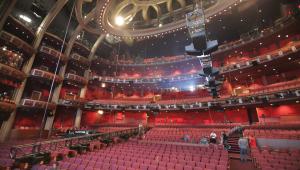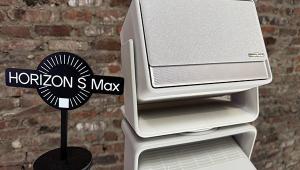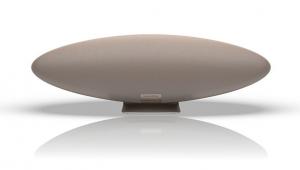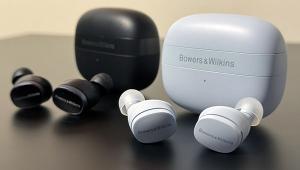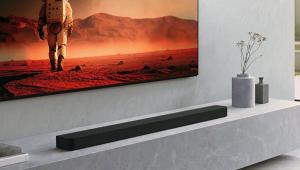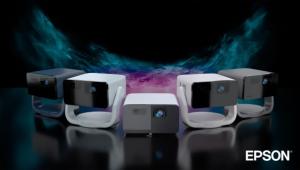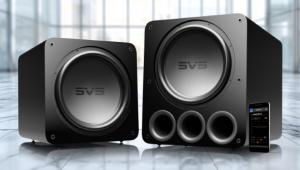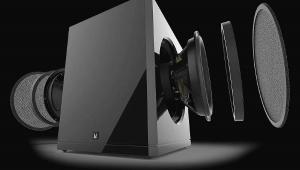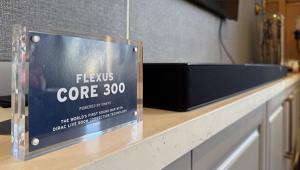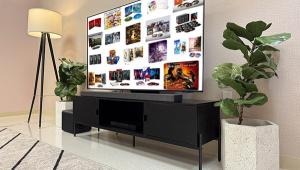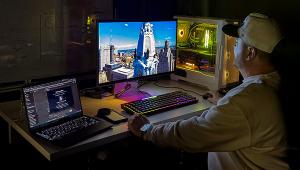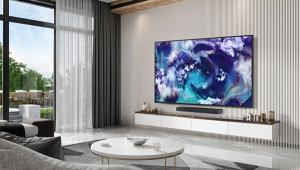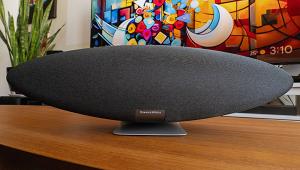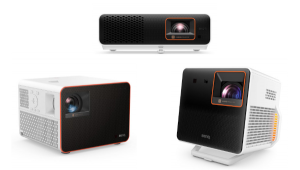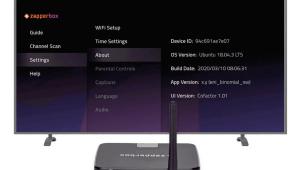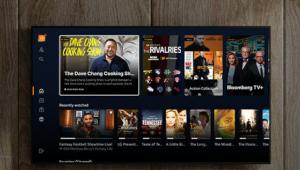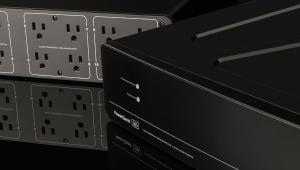Plasma vs. LCD Page 5
| Plasma vs. LCD: Just the Facts |
| The purpose of our test was to do a blind, side-by-side subjective comparison of plasma and LCD flat-panel TVs from well-known manufacturers. To make this comparison as fair as possible, we needed to find high-def models of each type in the same size - not an easy task. This concern for a close visual match overshadowed any price difference between the two, which is mostly due to the more costly LCD set's having a built-in HDTV tuner with CableCARD, and also because big-screen LCD TVs are new on the scene and still in short supply. Big-screen plasma TVs, on the other hand, have been around for several years. Now here are some facts about both technologies that you should know before making a buying decision. The phosphor-lined cells on plasma TVs are subject to the same "burn-in" vulnerability as tube models - this is when graphics like videogame backgrounds or stock-ticker patterns are left onscreen for long periods and persist even after you change programs. But there are plenty of ways to avoid burn-in, and some sets even include processing to prevent it. Another point: while plasma sets, which come as big as 65 inches diagonal, dwarf the largest LCD models (46 inches), they currently have limited pixel resolution compared with those sets. The biggest LCDs can provide a whopping 1,920 x 1,080 pixels, enough to display a 1080i-format high-def program (or 1080p, for that matter) in its full native resolution - vertical and horizontal - without scaling it to fit the pixel layout of the screen. If you're keeping an eye on your electric bill, you should also know that LCD TVs tend to consume less power than same-size plasma sets. And then there's the issue of product lifespan. Although LCD is often cited as having the greater longevity of the two, most plasma-TV manufacturers rate their new models to last for two decades or more. By that time, there will likely be something more intriguing on the market, like high-definition wallpaper. - A.G. |
The Final Round Our three video experts summarize their impressions
 David RanadaThe LCD had less accurate color overall, and the grayscale - the range of tones between full black and full white - was less pure (distinctly greenish as opposed to the slightly bluish grayscale on the plasma) and less linear (darks got pushed to black). It also lost details and color saturation in the brightest portions of the image. Background noise in the program material was highly visible, too. On the other hand, the plasma didn't deliver as bright a picture, though this could have been a result of the LCD's pushing signals near full white to full white, which makes for a considerably brighter picture overall when the image contains a lot of near-full-white areas, as in the clips featuring snow or bright clouds. The plasma refrained from pushing the image up to white or down into black, and that alone could account for much of its superiority in detail, color hue, and color saturation. On the whole, I greatly preferred the less exaggerated imagery of the plasma set.
David RanadaThe LCD had less accurate color overall, and the grayscale - the range of tones between full black and full white - was less pure (distinctly greenish as opposed to the slightly bluish grayscale on the plasma) and less linear (darks got pushed to black). It also lost details and color saturation in the brightest portions of the image. Background noise in the program material was highly visible, too. On the other hand, the plasma didn't deliver as bright a picture, though this could have been a result of the LCD's pushing signals near full white to full white, which makes for a considerably brighter picture overall when the image contains a lot of near-full-white areas, as in the clips featuring snow or bright clouds. The plasma refrained from pushing the image up to white or down into black, and that alone could account for much of its superiority in detail, color hue, and color saturation. On the whole, I greatly preferred the less exaggerated imagery of the plasma set.
 Al Griffin For a TV to be good, it needs to actually look good with a broad variety of programs - everything from HDTV to VHS tapes. The plasma set nimbly handled most everything we threw at it, delivering consistently crisp pictures with a smooth contrast range and clean, vivid colors. The only thing I could ask for would be greater shadow depth, but I've had the same experience with many other plasma TVs in the past. Interestingly, shadow depth was an area where the LCD shined - that and its incredibly bright image, which retained good contrast even with the lights turned on. But compared with the plasma, the LCD's picture lacked subtlety. Its greater native resolution should have been readily apparent with high-def programs, but it tended to wash out detail in bright and even medium-bright pictures. Compared with the plasma, the LCD also lacked color accuracy, and it couldn't handle noisy images like those on analog cable channels. LCD has a bright future, but for now I prefer plasma.
Al Griffin For a TV to be good, it needs to actually look good with a broad variety of programs - everything from HDTV to VHS tapes. The plasma set nimbly handled most everything we threw at it, delivering consistently crisp pictures with a smooth contrast range and clean, vivid colors. The only thing I could ask for would be greater shadow depth, but I've had the same experience with many other plasma TVs in the past. Interestingly, shadow depth was an area where the LCD shined - that and its incredibly bright image, which retained good contrast even with the lights turned on. But compared with the plasma, the LCD's picture lacked subtlety. Its greater native resolution should have been readily apparent with high-def programs, but it tended to wash out detail in bright and even medium-bright pictures. Compared with the plasma, the LCD also lacked color accuracy, and it couldn't handle noisy images like those on analog cable channels. LCD has a bright future, but for now I prefer plasma.
 David KatzmaierIn both Master and Commander and Chicago, the fog and shadows looked smoother on the plasma than on the LCD. But skin tones seemed much more realistic on the LCD, particularly Frodo's face in The Fellowship of the Ring. With high-def material, the extra detail in the LCD was immediately apparent, with more whorls and sharper details visible in the clouds from Digital Video Essentials' space-shuttle sequence. But the plasma's primary colors seemed more natural, particularly green and blue (although red was a bit better on the LCD). In darker scenes I noticed more noise in the blacks on the plasma and cleaner shadows, with slightly better detail, on the LCD. In shots of the blue sky from The Fellowship of the Ring and Toy Story, the LCD seemed a bit noisier. Overall, I preferred the LCD picture, although the Sharp TV's greenish grays gave me pause. The high-contrast look of the picture, and greater detail with high-def sources, won me over.
David KatzmaierIn both Master and Commander and Chicago, the fog and shadows looked smoother on the plasma than on the LCD. But skin tones seemed much more realistic on the LCD, particularly Frodo's face in The Fellowship of the Ring. With high-def material, the extra detail in the LCD was immediately apparent, with more whorls and sharper details visible in the clouds from Digital Video Essentials' space-shuttle sequence. But the plasma's primary colors seemed more natural, particularly green and blue (although red was a bit better on the LCD). In darker scenes I noticed more noise in the blacks on the plasma and cleaner shadows, with slightly better detail, on the LCD. In shots of the blue sky from The Fellowship of the Ring and Toy Story, the LCD seemed a bit noisier. Overall, I preferred the LCD picture, although the Sharp TV's greenish grays gave me pause. The high-contrast look of the picture, and greater detail with high-def sources, won me over.
If you liked this article, you might enjoy the following: DLP vs. LCoS DLP vs. LCD
- Log in or register to post comments




